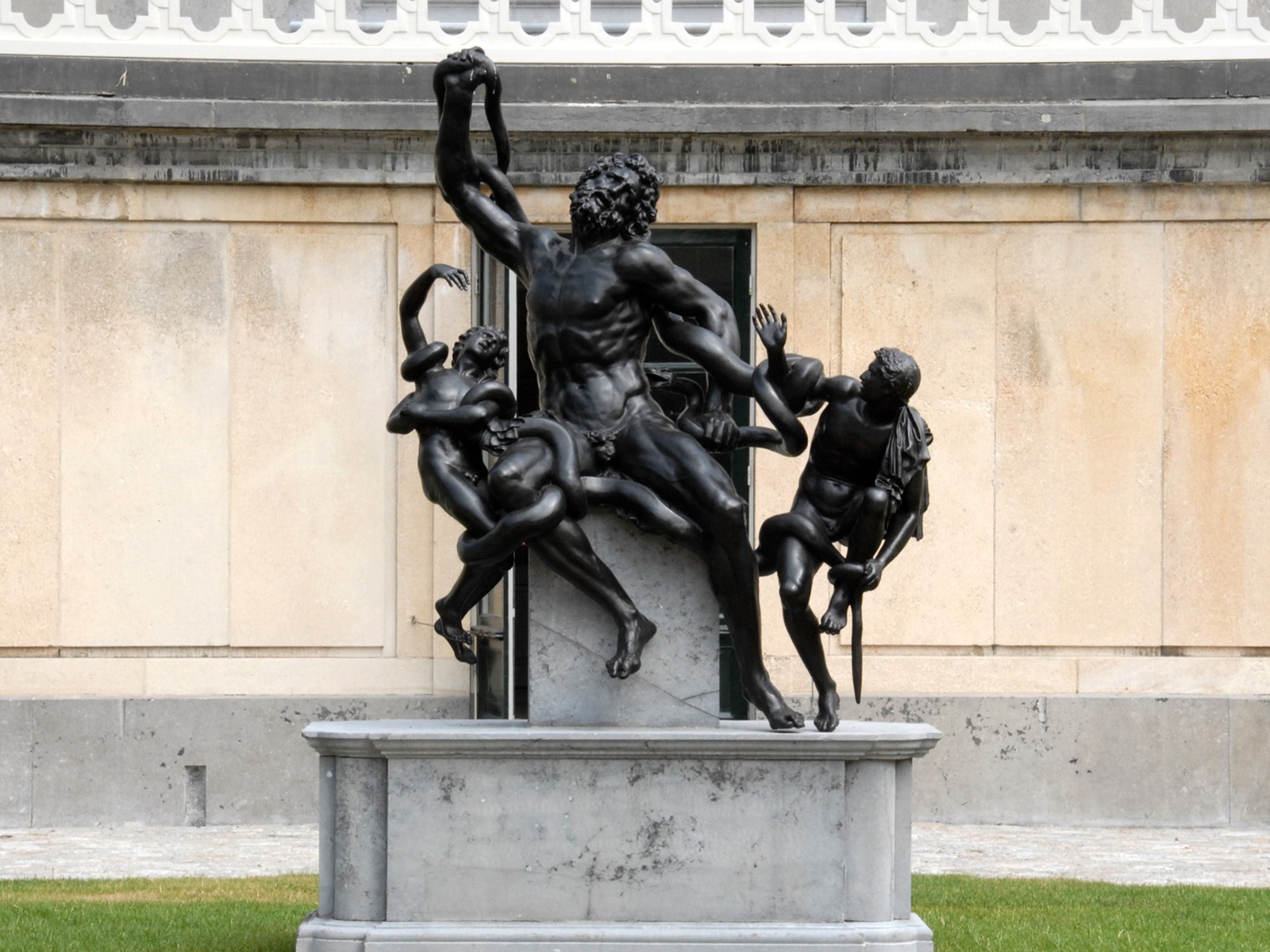Sculptures and reliefs for Welgelegen Pavilion, Haarlem
Tags monument
Disciplines sculpturerestaurations / reconstructions
Sculptures and reliefs for Welgelegen Pavilion, Haarlem
On May 29, 2009, in the presence of Queen Beatrix, was the opening of the fully restored province house of North-Holland, Welgelegen Pavilion in Haarlem. Not only the interior but also the exterior decorations of this eighteenth century mansion, including a number of facade reliefs and a unique group of seven statues, have been restored to their former glory. A clever piece of work, since these sculptures were badly damaged in the course of centuries and the question of how to copy them responsibly was a major problem.
Francesco Righetti
The Neoclassical style Pavilion Welgelegen on the Haarlemmerhout was built between 1785 and 1789, commissioned by the wealthy American banker Henry Hope (1735-1811). For the construction of both the interior and exterior there was a well thought out decorations program. For the decoration of the facade this includes five bas-reliefs with depictions of classical scenes. These reliefs, however, were made of plaster, with the result that already a few decades ago their condition had become so bad that it was decided to replace them with copies from cement mortar, unfortunately not of very high quality. Another important part of the decoration program for the exterior of Pavilion Welgelegen consisted of a group of statues by the Roman sculptor Francesco Righetti (1749-1819). They represent Amor, Apollo, Mercury, Euterpe, Ganymede with eagle, Bacchus and Amphelos, a satyr. The seventh piece is a sculpture group representing the Laocoön group, a copy of the marble statue which stands in the Vatican Museum in Rome. Also, these sculptures were formed from an exceptional material for this purpose, namely lead. As can be expected, for this reason these sculptures, like the facade reliefs, were severely damaged in the course of time. Some sculptures began to sag here and there, and the relatively soft metal began to crack in various places. Altogether this prompted the curator of Welgelegen Pavilion, Gerrit Bosch, to decide on a thorough restoration, but the question was how to technically realize this.
Willem Noyons
On the advice of the sculpture curator of the Rijksmuseum, Frits Scholten, the Utrecht artist Willem Noyons was approached. As a designer Noyons had shown regularly not to avoid technical research and, partly due to his vast knowledge of various materials, he had been able to help the Rijksmuseum before with the restoration and copying of particular works of art. Noyons advised to make copies of the reliefs in plastic. The curators then decided to place the originals in the depot for stone works of art, called the lapidary of the civil service. Concerning the copying there were two opinions. One was to make copies of the current state. The other was to restore the existing reliefs as well as possible and to recover the missing parts. Using the new technique developed by Willem Noyons especially for the restoration of these sculptures, it proved possible to reach a compromise in this aspect.
Materials and technology
Where the reliefs were no too severely damaged, they were restored in a non-destructive, temporary way. Concerning the more heavily damaged reliefs, it was decided to make an intermediate casting in plaster and to perform the restauration on this casting using a plastic material. This concerned missing parts of human and animal figures, such as arms, hands and feet, and protruding parts in the background. On top of this a silicon mold was made with a supporting mold, which was filled with a plastic material which in terms of structure and color resembles the original material. After it had been applied in the mold it was strengthened with reinforced polyester. The result is amazing. Even though the sculptures are entirely new, they give the impression of being ancient, even in close-up.
Bronze for lead
For the lead garden statues of Righetti another solution was found. This series of sculptures is unique since almost no such ensembles of vulnerable lead sculptures exist anywhere in the world. In order to preserve them for the future, the Provincial-Executive decided in 2005 to donate them to the Rijksmuseum. The gift was gratefully accepted and the museum then took care of the restoration. At the reopening of the renovated museum, the restored originals will be given a prominent place in the Atrium, the large hall in the former courtyard of the Cuypers building. But not only the Rijksmuseum has benefited from this donation; also Pavilion Welgelegen has profited. In the garden of this mansion there are now copies of the statues, created by Willem Noyons. In collaboration with the foundry Stijlaart from Tiel he had first brought the lead Righetti sculptures back to their original shape and position, and then had them casted in bronze. So now the Welgelegen garden once again looks like it did in its best days. But unlike two centuries ago, this time the survival of the artwork is ensured. An effort the banker Henry Hope did not make at the time.
Dr. Jaap Versteegh
